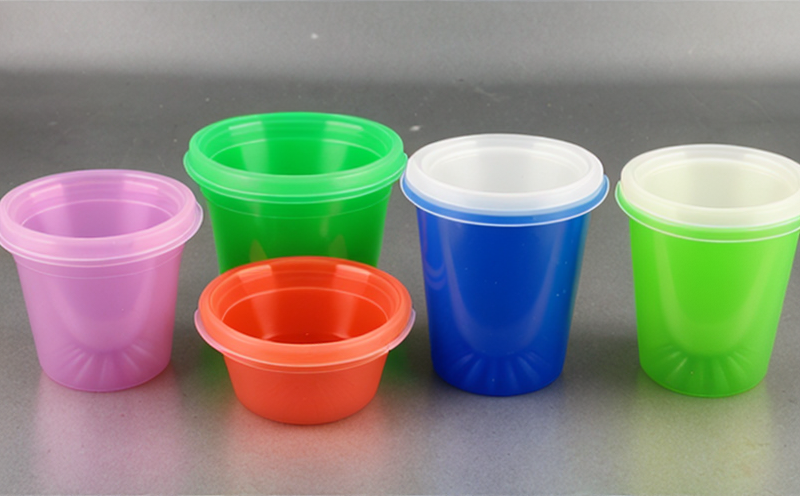JIS K 6758 Disposable Plastics Odor Testing
The JIS K 6758 standard is a critical guideline in evaluating the odor characteristics of disposable plastics. This method is essential for ensuring that products meet stringent quality and safety standards, which are paramount for consumer health and environmental considerations.
Odor testing under this standard involves assessing the volatile organic compounds (VOCs) released by plastic materials during their lifecycle. These emissions can affect air quality and user comfort, especially in environments where prolonged exposure is expected, such as hospitals, food service facilities, or consumer products like packaging.
The JIS K 6758 methodology specifies a series of controlled conditions to simulate real-world usage scenarios. This includes temperature, humidity, and time parameters that are designed to mimic the environmental stresses encountered by plastic items in their intended applications. The testing apparatus used is typically a headspace gas chromatograph (GC), which captures and analyzes the volatile components released from the samples.
The process begins with detailed sample preparation. This involves cutting the disposable plastics into standard-sized pieces, ensuring they are representative of typical use conditions. The specimens are then placed in a sealed container, where they are exposed to specific temperature and humidity levels for a predetermined duration. After this incubation period, the headspace gas is collected and analyzed using GC techniques.
The analysis focuses on identifying and quantifying VOCs present in the gas phase above the samples. This includes both primary odorous compounds and secondary products formed through degradation reactions. The results are compared against predefined thresholds specified in JIS K 6758, which dictate acceptable levels of odor emissions.
Compliance with these standards is not only a requirement for meeting regulatory expectations but also reflects a commitment to product safety and user well-being. By adhering to the JIS K 6758 protocol, manufacturers can ensure that their products do not contribute to air quality issues or discomfort during use.
Furthermore, this testing serves as a vital tool for R&D teams in developing new materials with improved odor profiles. The insights gained from these tests allow for iterative improvements in formulation and manufacturing processes, ultimately leading to more sustainable and user-friendly products.
Why It Matters
The importance of JIS K 6758 testing cannot be overstated. Odor emissions from plastics can have significant impacts on both human health and environmental sustainability. In confined spaces, such as hospitals or food service areas, odors can cause discomfort, irritation, and even adverse health effects if not managed properly.
For manufacturers, compliance with JIS K 6758 is a key differentiator in the market. It demonstrates a company's dedication to producing high-quality products that meet international standards. This commitment enhances brand reputation and can open doors to new markets where stringent quality controls are required.
In terms of environmental considerations, reducing odor emissions from plastics contributes to better air quality and reduced pollution. By minimizing the release of harmful VOCs, manufacturers play a crucial role in protecting public health and promoting sustainable practices.
Benefits
The benefits of JIS K 6758 testing are multifaceted, encompassing both operational efficiency and customer satisfaction. For manufacturers, the process ensures that products meet stringent quality and safety standards, thereby reducing the risk of non-compliance penalties and potential recalls.
From an operational standpoint, this testing can streamline supply chain management by ensuring that incoming materials are up to specification. This reduces waste and improves overall production efficiency. Additionally, it allows for continuous improvement through data-driven insights into product performance.
For customers, the benefits extend beyond just meeting legal requirements. Products that comply with JIS K 6758 are likely to be more comfortable and safer to use, enhancing user satisfaction and loyalty. This can translate into increased market share and customer retention for manufacturers.
International Acceptance and Recognition
The JIS K 6758 standard is widely recognized and accepted in many countries around the world, particularly those with stringent environmental regulations. Its adoption reflects a commitment to international standards that prioritize both product quality and user safety.
Many global organizations and regulatory bodies reference or incorporate JIS K 6758 into their own testing protocols, ensuring consistency across different markets. This broad acceptance underscores the standard's reliability and relevance in the industry.
The widespread use of this method also fosters collaboration among manufacturers, researchers, and regulators from various countries, promoting best practices and innovations in disposable plastics technology.





